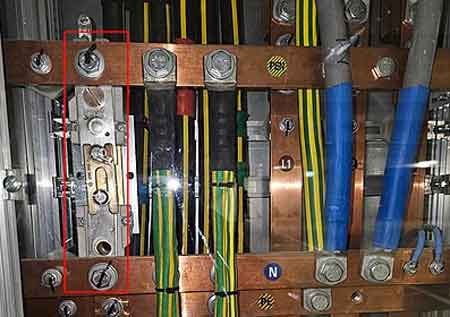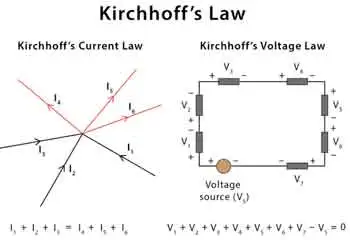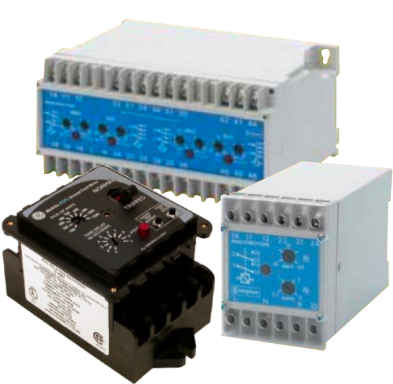Neutral Conductor Explained

Substation Grounding Training
Our customized live online or in‑person group training can be delivered to your staff at your location.

- Live Online
- 12 hours Instructor-led
- Group Training Available
Download Our NFPA 70E Fact Sheet – 2024 Electrical Safety Edition

- Understand how NFPA 70E works with NEC and NFPA 70B standards
- Clarify the shared responsibility between employers and employees
- Learn how NFPA 70E supports OSHA compliance
A neutral conductor carries unbalanced current back to the source in AC electrical systems. It stabilizes voltage, ensures circuit safety, and works with phase and ground wires to maintain proper distribution and fault protection.
What is a Neutral Conductor?
A neutral conductor is a critical component in AC power systems that provides a return path for current.
✅ Returns unbalanced current safely to the source
✅ Stabilizes voltage between phase conductors
✅ Enhances electrical system safety with grounding
It carries current but typically has no voltage potential, thus completing the circuit by providing a return path for unbalanced current. Identified by its white or gray insulation, the neutral conductor connects the power source to the load, allowing the circuit to function correctly and ensuring balance within the system. A properly installed neutral conductor is closely tied to electrical grounding, which ensures safe fault current paths and compliance with NEC standards.
Power Quality Analysis Training
Request a Free Power Quality Training Quotation
Function and Importance
In any standard electrical installation, the neutral conductor is vital for single-phase circuits and other configurations. It connects to the neutral busbar in the electrical panel, which serves as the central grounding point in an electrical system. This neutral busbar links to each outlet, distributing electric power safely. This setup ensures the electric power remains balanced across the circuit and works harmoniously with the phase conductor, which carries live current. Because neutral conductors play such an important role in balance and stability, they are central to overall power quality, where voltage fluctuations, harmonics, and grounding all interact.
The National Electrical Code (NEC) outlines strict requirements for the sizing. According to these guidelines, the size should match or exceed the size of the ungrounded (or phase) conductor in the circuit. This standard helps prevent overheating and potential faults, which can arise if an undersized one is used, especially when there is an imbalance in single-phase circuits. Compliance with the NEC is crucial as it dictates not only the size but also the insulation type and color codes, which significantly reduce the risk of accidents in electrical engineering practices. When understanding system efficiency, it helps to study apparent power and how real, reactive, and neutral currents affect circuit performance.
Test Your Knowledge About Power Quality!
Think you know Power Quality? Take our quick, interactive quiz and test your knowledge in minutes.
- Instantly see your results and score
- Identify strengths and areas for improvement
- Challenge yourself on real-world electrical topics
Neutral Conductor Functions and Safety Overview
| Aspect | Key Details |
|---|---|
| Primary Function | Provides a return path for unbalanced current in AC systems |
| Voltage Role | Stabilizes voltage between phase conductors |
| System Balance | Works with phase and ground conductors to maintain distribution balance |
| Identification (Color Code) | White or gray insulation as per NEC standards |
| Connection Point | Linked to the neutral busbar in the electrical panel |
| Sizing Requirement (NEC) | Must match or exceed the size of the ungrounded (phase) conductor |
| Safety Risks if Improper | Undersized conductors can overheat, cause voltage imbalance, or trigger fires |
| Difference from Ground | Neutral returns current; ground directs fault currents safely into the earth |
Safety and Risks
The proper sizing of a neutral conductor is critical, as improper or undersized neutral wiring can lead to electrical hazards. In fact, around 25% of electrical fires in the U.S. have been traced to issues related to faulty or undersized conductors. This statistic underscores the importance of correctly implementing the neutral conductor as part of an electrical system’s protection devices. The NEC requires a neutral conductor in circuits to be at least as large as the ground wire to safely handle potential current surges. For engineers calculating system stability, resources like the power factor calculation page highlight how neutral conductors interact with load types to maintain efficiency.
Distinguishing Neutral and Ground Conductors
In electrical engineering, neutral and ground wires often cause confusion due to their similar voltage characteristics. However, their functions are distinct. The ground wire acts as a safety path for fault currents, directing them safely into the ground in case of an electrical fault, whereas the neutral conductor completes the circuit by returning the current. Although wiring mistakes can cause devices to operate if the ground is accidentally used as neutral, this is against the electrical code and creates a safety risk, as each wire plays a unique role in protecting users and the system.
The NEC has designated specific color codes to help differentiate neutral conductors clearly. For example:
Neutral conductor colors: White or gray
Ground conductor colors: Green, green with yellow stripes, or bare
These color standards enhance the safety and clarity of electrical installations, particularly in complex environments where protection devices must function correctly to safeguard the system.
Historical Context of the Term 'Neutral Conductor'
The term neutral conductor originated in the late 19th century in the U.S. electrical engineering field. Its first recorded use appeared in George William Haskins' textbook Elements of Electrical Engineering in 1895, and it has since become a standard term globally. The designation "neutral" implies that the wire, unlike the phase conductor, is not actively charged, though it remains essential in completing and balancing the electrical circuit.
Understanding its role in electrical systems is fundamental for safety and functionality. Along with the phase conductor, it enables the effective flow of electric power while ensuring that the system remains balanced and safe for use. Additionally, adherence to NEC standards for wire size, color coding, and proper installation practices helps mitigate the risks associated with electrical fires and system faults.
Frequently Asked Questions
What is the purpose of a neutral conductor in an electrical system?
It serves as a return path for electric current back to the power source, ensuring that the circuit completes safely. It is especially crucial in single-phase circuits, as it balances the electric power flow and helps prevent excessive voltage in the system. This balance is essential for system stability and safety.
How is a neutral conductor different from a ground conductor?
While both the neutral and ground wires often have zero voltage, they serve different functions. It completes the circuit by returning current to the source, whereas the ground wire acts as a safety mechanism, directing fault currents safely to the ground in case of an electrical fault. Using the ground as a neutral is against code and unsafe. Properly bonded systems integrate the neutral with grounding components, making grounding and bonding critical to both safety and regulatory compliance.
FREE EF Electrical Training Catalog
Download our FREE Electrical Training Catalog and explore a full range of expert-led electrical training courses.

- Live online and in-person courses available
- Real-time instruction with Q&A from industry experts
- Flexible scheduling for your convenience
What color is the neutral conductor, and why are specific colors used?
The neutral conductor is typically white or gray. These color codes, established by the National Electrical Code (NEC), help electricians and technicians quickly identify the function of each conductor, enhancing safety and preventing wiring errors that could lead to electric shock or fires. Only these colors are permitted for neutral wires in standard wiring systems.
Does the neutral conductor carry current?
Yes, the neutral conductor carries current as it completes the electrical circuit by providing a path back to the power source. The amount of current it carries depends on the balance of the load in the system. In balanced three-phase systems, the current on the wire is minimal or zero, but in single-phase circuits or unbalanced systems, it can carry significant current.
What happens if the neutral conductor is undersized or faulty?
An undersized or faulty neutral conductor can lead to dangerous conditions, such as overheating, electrical fires, or voltage imbalances. This is why the NEC requires that it be sized at least as large as the phase conductor in a circuit. Correctly sizing it is essential to prevent potential hazards and ensure reliable system performance.
Related Pages







